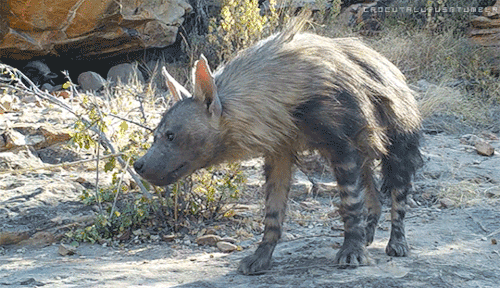F1 Engine Playing Happy Birthday
Some cool engineering please !!!
F1 engine playing Happy Birthday
When I was researching about F1 sometime ago, I stumbled upon this amazing video of the lotus team playing happy birthday on a F1 freaking engine!
The way this works is that the sheet music is taken and broken down into frequency and the milliseconds that it lasts for.
And the engine is turned on and off rapidly with different frequency tones to produce the tone i.e
OFF - f1 Hz - f1 Hz - OFF - f2 Hz - f2 Hz - f2 Hz- OFF …. (entire song)
The dynamic response of the F1 engine to changes in the throttle is what blew my mind. F1 cars are able to pull this off due to the extremely lightweight flywheel/general rotating assembly.
Imperial march on Floppy drive
Now you can do the same thing with motors as well. The motors can be revved up or down based on the frequency of the input.
Here’s the imperial march played on the floppy drive and Super Mario on the stepper motor:
What you are hearing is the tones made by the motor.
Notice the slider moving faster for higher frequency
If you are into Arduino and DIY projects you can play around with the ToneMelody package and piezo-buzzer to get a similar response.
Thanks for asking. Have a great day!
More Posts from Iphleandro-blog and Others







Today’s doodle: Torvosaurus tanneri for some signage at Eccles Dinosaur Park. Happy #FossilFriday!
Batalla épica con final inesperado
Golden tortoise beetle transforming from gold to red
“Gödel’s incompleteness theorems argue that the truth of some mathematical systems are unknowable. Alan Turing extended that idea to computers, showing that there are some algorithms for which it is impossible to know whether a computer can complete the calculations for in a finite amount of time. Now, a team of physicists believe they have extended the concept even further to the physical realm. In a finite 2D crystal lattice of atoms it is known that it is possible to calculate in a finite time the “spectral gap"—the amount of energy between the lowest energy level of the electrons in a material and the next one up. In the new work, Toby Cubitt of University College London and his colleagues appear to have shown that in an infinite 2D lattice the calculation of the spectral gap it is impossible to know if the calculation ends. If true, that means that even if the spectral gap is known for a finite-size lattice, the value could change abruptly with just the addition of a single atom and it is impossible to know when it will do so.” - Physics Today

( Kurt Gödel (left) demonstrated that some mathematical statements are undecidable; Alan Turing (right) connected that proof to unresolvable algorithms in computer science. )
Article by Nature: Paradox at the heart of mathematics makes physics problem unanswerable


x




The concept of information as viewed in theoretical physics through statistical mechanics and thermodynamics, and its implications and connections with evolutionary biology. An interesting reading:
How Life (and Death) Spring From Disorder (via WIRED -original story from Quanta Magazine)
Biological systems don’t defy physical laws, of course—but neither do they seem to be predicted by them. In contrast, they are goal-directed: survive and reproduce. We can say that they have a purpose—or what philosophers have traditionally called a teleology—that guides their behavior.
By the same token, physics now lets us predict, starting from the state of the universe a billionth of a second after the Big Bang, what it looks like today. But no one imagines that the appearance of the first primitive cells on Earth led predictably to the human race. Laws do not, it seems, dictate the course of evolution.
–
David Kaplan explains how the law of increasing entropy could drive random bits of matter into the stable, orderly structures of life.




You and I had a fight recently.

Top Shot: A Lion’s Gaze
Top Shot features the photo with the most votes from the previous day’s Daily Dozen, 12 photos selected by the Your Shot editors. The photo our community has voted as their favorite is showcased on the @natgeoyourshot Instagram account. Click here to vote for tomorrow’s Top Shot.
Your Shot photographer Pratha Narang photographed this lion after a buffalo hunt. Your Shot Producer, David Y. Lee writes, “Fantastic portrait of this magnificent animal. I agree with Your Shot photographer Jiawei L. who commented, ‘This is such an intense photo! I love the frame gives me an opportunity to look through the blur branches and finally reach the eye of the lion. It is such an intense spot!’” Photograph by Pratha Narang
JÓVENES INVESTIGADORES: 1.PALEONTOLOGÍA
Young researchers in paleontology. Universidad Autónoma de Madrid
-
 akimaamika liked this · 2 years ago
akimaamika liked this · 2 years ago -
 basicallyido liked this · 5 years ago
basicallyido liked this · 5 years ago -
 mylittleworldd liked this · 6 years ago
mylittleworldd liked this · 6 years ago -
 princess-babu-unicorn reblogged this · 6 years ago
princess-babu-unicorn reblogged this · 6 years ago -
 princess-babu-unicorn liked this · 6 years ago
princess-babu-unicorn liked this · 6 years ago -
 iphleandro-blog reblogged this · 7 years ago
iphleandro-blog reblogged this · 7 years ago -
 kurisu89 reblogged this · 7 years ago
kurisu89 reblogged this · 7 years ago -
 locusomniatoris liked this · 7 years ago
locusomniatoris liked this · 7 years ago -
 cool-im-a-loser reblogged this · 7 years ago
cool-im-a-loser reblogged this · 7 years ago -
 cool-im-a-loser liked this · 7 years ago
cool-im-a-loser liked this · 7 years ago -
 ghostymiau liked this · 7 years ago
ghostymiau liked this · 7 years ago -
 amamillalatortilla liked this · 7 years ago
amamillalatortilla liked this · 7 years ago -
 cupcake-assassin reblogged this · 7 years ago
cupcake-assassin reblogged this · 7 years ago -
 miracufic reblogged this · 7 years ago
miracufic reblogged this · 7 years ago -
 naturallyaspirated liked this · 7 years ago
naturallyaspirated liked this · 7 years ago -
 ekeshnan reblogged this · 7 years ago
ekeshnan reblogged this · 7 years ago -
 parable626 reblogged this · 7 years ago
parable626 reblogged this · 7 years ago -
 parable626 liked this · 7 years ago
parable626 liked this · 7 years ago -
 mayleis reblogged this · 7 years ago
mayleis reblogged this · 7 years ago -
 tyrannosaurus-flex67 reblogged this · 7 years ago
tyrannosaurus-flex67 reblogged this · 7 years ago -
 theoldsmelly liked this · 7 years ago
theoldsmelly liked this · 7 years ago -
 horse-badorties reblogged this · 7 years ago
horse-badorties reblogged this · 7 years ago -
 horse-badorties liked this · 7 years ago
horse-badorties liked this · 7 years ago -
 sumbluespruce liked this · 7 years ago
sumbluespruce liked this · 7 years ago -
 artinwood54 reblogged this · 7 years ago
artinwood54 reblogged this · 7 years ago -
 artinwood54 liked this · 7 years ago
artinwood54 liked this · 7 years ago -
 capnhpn reblogged this · 7 years ago
capnhpn reblogged this · 7 years ago -
 capnhpn liked this · 7 years ago
capnhpn liked this · 7 years ago -
 aleman245 reblogged this · 7 years ago
aleman245 reblogged this · 7 years ago -
 arrws-annmus liked this · 7 years ago
arrws-annmus liked this · 7 years ago -
 amalg-em reblogged this · 7 years ago
amalg-em reblogged this · 7 years ago -
 justsomeguypiastri liked this · 7 years ago
justsomeguypiastri liked this · 7 years ago